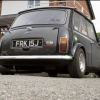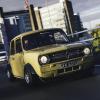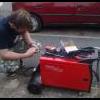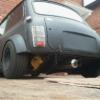can i ask a quick question about all this
as i understand it a short stroke engine has
a short stroke (up and down bit)
b large bore (big hole)
but everything i have ever seen says you dont bore a turbo engine out more than a 1293
so if you have the bore of a 1293 and a short stroke dont you end up with a small cc engine ?
the short stroke is achieved by offest grinding the crankshaft so effectively the pistons have less travel, so yes, it would make a small engine even have an even smaller CC, but the advantages of shorter stroke engines is their abiltiy to rev (in effect I guess it's because of less centrefugal force).
I was just asking the question, because I have seen people do 1380 turbos and quite a few 1330s too, but you never see short stroke turbo builds in the mini scene (that I knew of).
So, in the world of normally aspirated engines, there are some massive advantages of having shorter stroke engines (like the trusty, but quite rare 1340). The main one being that you will have an engine capable of high revs, larger power band and more driving in each of the lower gears.
This is almost right

It's not centrifugal force that is the issue with revving, rather the piston speeds, tensile loads and the fact that long stroke engines suffer from having LESS average swept volume which limits the rate of acceleration. (Though the shorter stroke and the lesser inertial energy and lower induced tensile loads from lower piston speeds does load the three main bearing bottom end less, so you are quite correct in that sense, I think that's what you meant).
If you think about it, imagine the volume of the SSBB engine as it starts going down the bore. Because of it's larger bore and shorter stroke, for each degree of crank rotation the engine gains more volume more quickly than a long stroke smaller bore engine. So for a given pressure ratio, (boost level), the engine is taking in MORE air fuel mixure than a SBLS engine at a faster rate. Also consider what the cam is doing. This fast cylinder filling also happens to coincide with peak cam lift more in the big bore engine than in the small bore engine.
At peak lift in a typical A series street cam, the big bore engine will have cycled through a much larger percentage of it's total capacity in relation to cam duration. This in turn leads to greater efficiency due to the much better cylinder filling. The short duration cam is closing before the long stroke engine is done trying to fill the cylinder.
But this gets worse! A long stroke engine then needs more cam duration to make more power, but because of its long stroke, a long duration cam reduces effective cylinder pressures and turns the motor into a slug!
A short stroke engine can stand more cam lift and duration, (ignoring for now the effect of the 5 port head...I am not using it), and will make better use of an increase in duration without killing low rpm power as much.
There have been alternative cranks in the history of mini production, the 970 crank was used in the big bore blocks, and the one I am using, the 1071, which has the same stroke as an 850 mini.
While on that subject, small bore 850 factory cranks have a great deal of potential when fitted into 998 blocks bored out to the new minispares oversize, (over the previous maximum of +60 thou), when fitted with the custom thrusts. I have built an 850/998 combo and it was a jewel of an engine, but that's another subject, one that will be in the magazine later this year.
Thanks for the kind words Jammy! Unlike some other magazines, all the staff on the mag are engineers and scientists and even the designers drive and work on their minis, so you can expect a lot of indepth tech like this in the mag backed up with project engines that are a bit different from the other mags. You will love the first issue! (Though we do have lots of feature cars as well as the tech....)



















